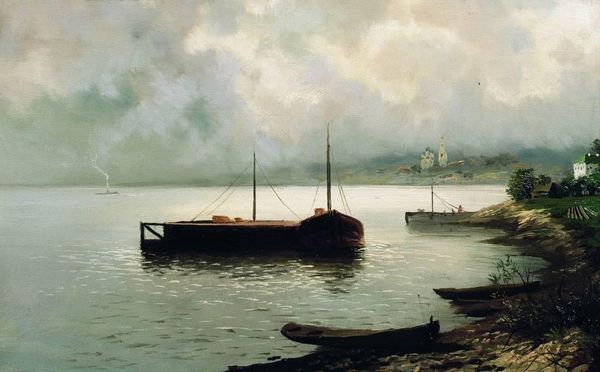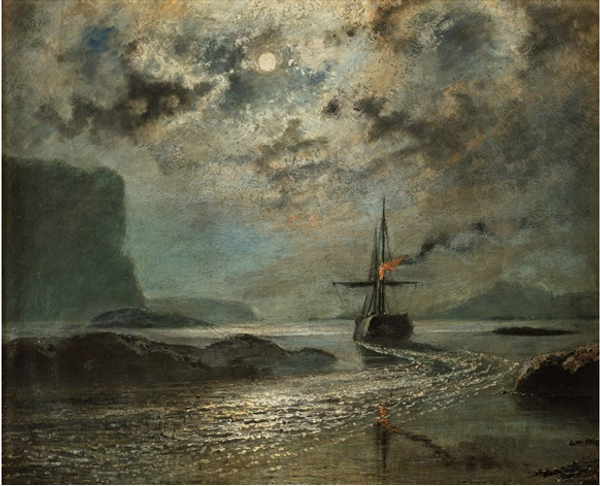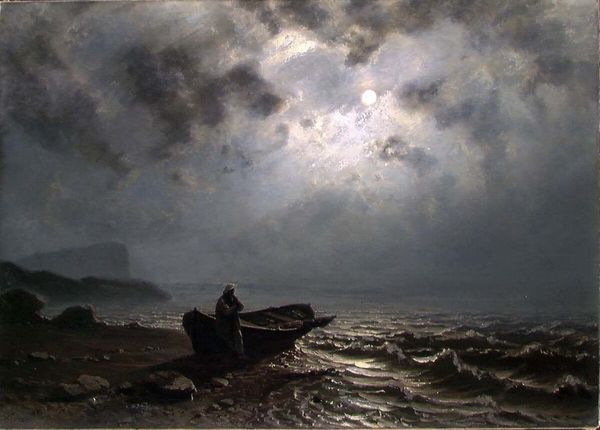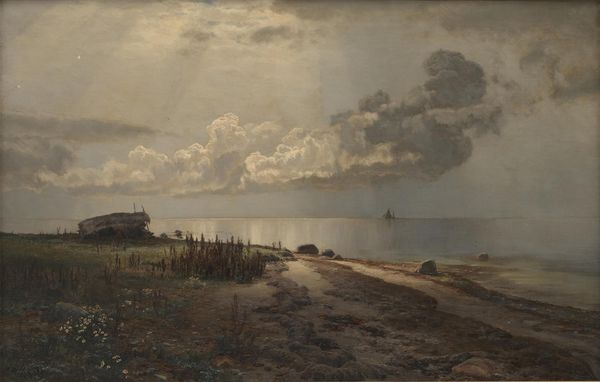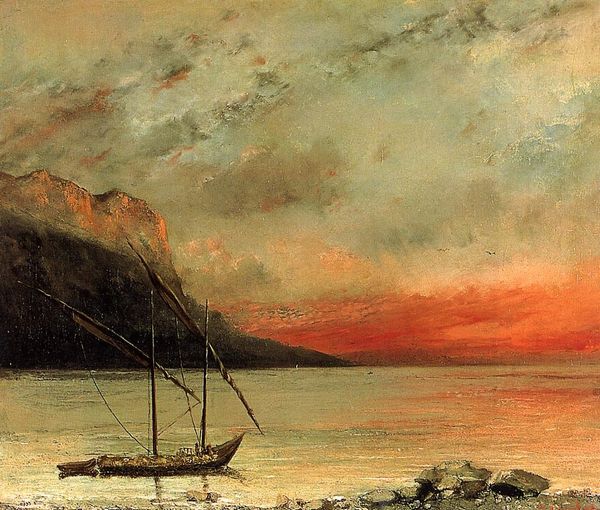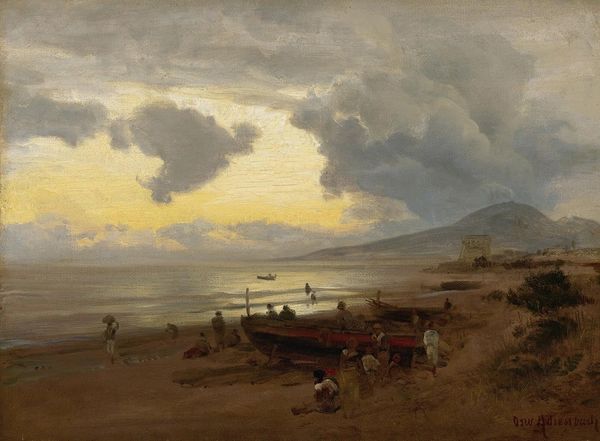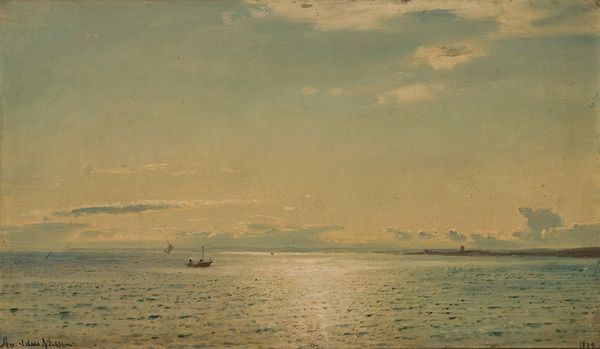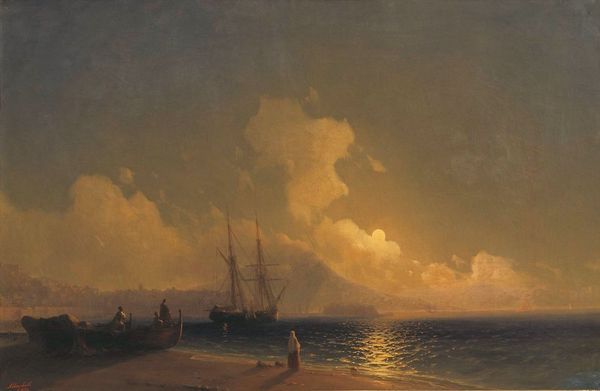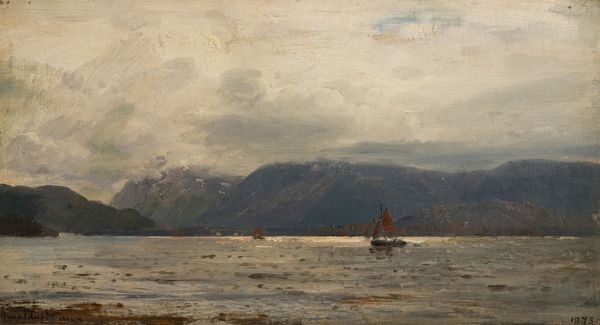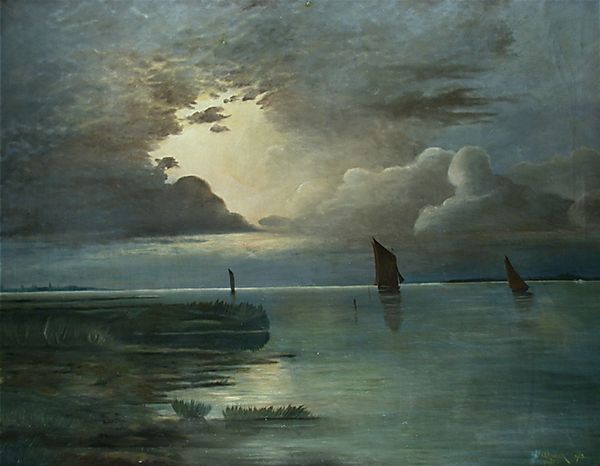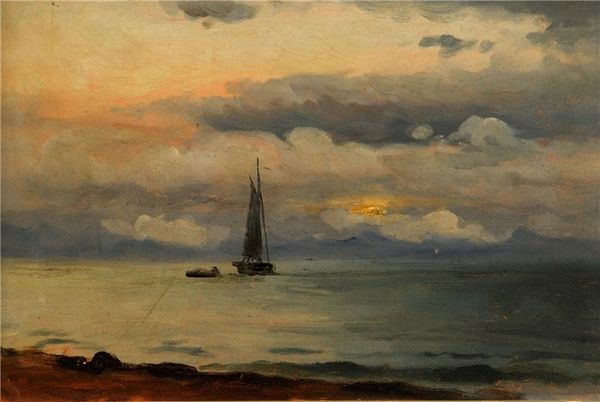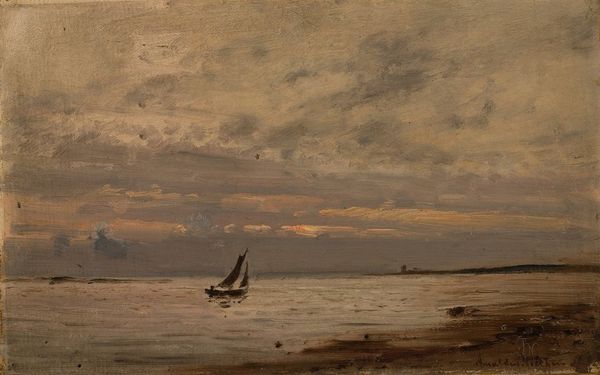
Copyright: Public Domain: Artvee
Curator: Ivan Aivazovsky, a Russian-Armenian painter, created this oil painting titled "Night at Gurzof" in 1891. The location, Gurzof, is now a part of Crimea, Ukraine, historically tied to complex political narratives of Russian expansion and cultural exchange. The very presence of his landscapes begs questions about identity and belonging in disputed territories. Editor: The initial impression is somber. There is a certain serenity to the silvery moonlight reflecting off the sea, yet a feeling of unease is suggested by the gathering storm clouds above and the dark mountain silhouettes in the distance. Curator: I see the interplay between light and dark as reflective of the political and social climate of the late 19th century, particularly the dynamics of the Russian Empire and its treatment of minority ethnic groups like the Tartars in Crimea. Aivazovsky's romantic rendering could either be read as a sympathetic portrayal or as an idealization that glosses over existing tensions and erasures of Tartar's existence. Editor: Focusing on purely compositional aspects, Aivazovsky directs our attention through the curve of the coastline. From the small cottage and figures in the foreground, along the small boats resting on the sand, guiding us ultimately towards the ships sailing in the moonlit water. Curator: Those figures intrigue me—who are these people standing on the shore? Do they represent Russian colonists, Tartar residents, or perhaps even Aivazovsky himself, a man of Armenian descent navigating the complexities of Russian society? And what are their relationships to the sea, both as a source of life and a means of displacement? Editor: The composition suggests balance through contrast. Dark versus light. Land versus sea. Rough, tempestuous sky above calm waters below. I'm curious as to Aivazovsky’s employment of diagonal lines versus curved lines that may imply underlying dynamic tensions and the overall aesthetic unity of the piece. Curator: This work encourages a wider examination of the social forces at play in shaping perceptions of landscape, identity, and history in the context of empire. I leave our listeners to meditate on the contested legacies evoked in this painted vista and how those realities of political upheaval continue today in Ukraine. Editor: An evocative work with striking interplay of light and shadow which invites one to analyze further.
Comments
No comments
Be the first to comment and join the conversation on the ultimate creative platform.
